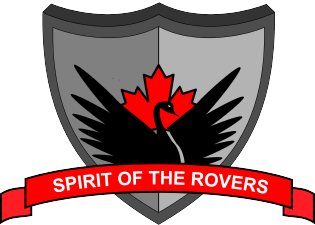
Home Sweet Home: Rovers’ Say Goodbye to Beloved Swangard Stadium for the Year
The most bittersweet of days arrived; it was time for the season finale at Swangard, our beloved little home and supporter-group namesake. Work is being done on the stadium track, so TSS Rovers must live up to their own name and roam the road for five-consecutive away matches this July (plus the playoffs) to end their 2023 League1 BC campaign.
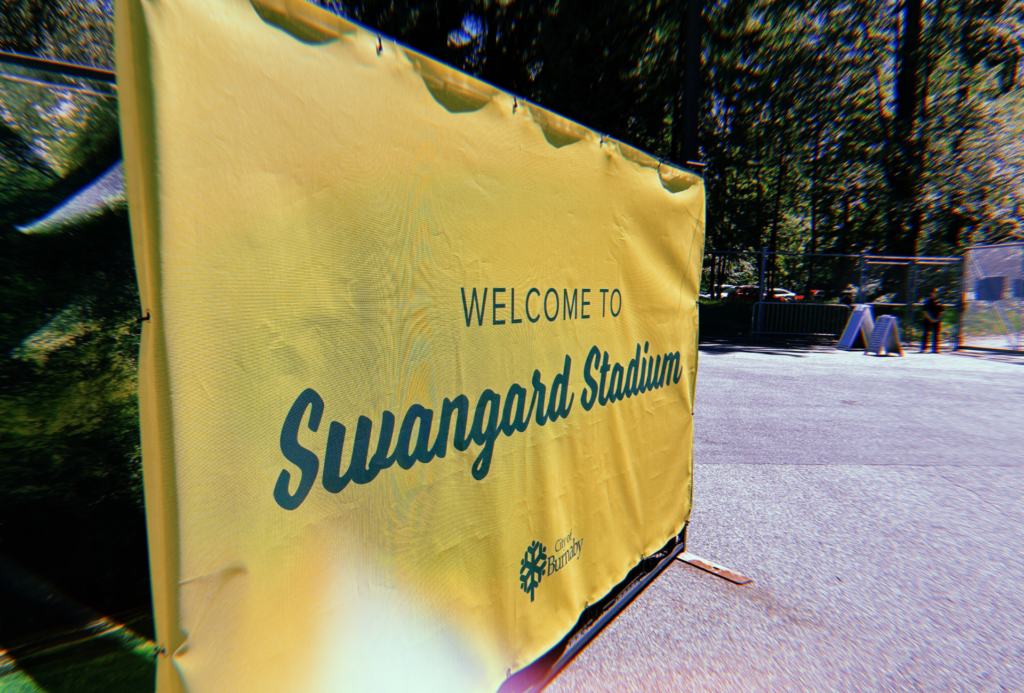
Joining fellow supporters on tour is a special experience, but nothing can replace a sun-soaked day shared on the natural Swangard grass. Our own bit of paradise. The idea of now waiting nine to ten months for another is agonising. This final home match also came on a Wednesday, sandwiched between two weekend road trips; us Swanguardians had to hustle from work to the stadium, not getting the drawn-out, full-day, peak-warmth finale we would have wanted. The results – a loss for the women’s team and a draw for the men – were not quite what we had in mind, either, but we still went out with a bang… and some smoke, of course.
The story of how Swangard Stadium came to be is an inspiring one. This simple yet effective ground, anchored by one permanent concrete stand on its west side, opened on the edge of Burnaby’s beautiful Central Park in the Spring of 1969. One man was largely responsible for this, and most other major sporting advancements and developments in the Vancouver area at the time. Erwin Swangard, a local sports reporter and editor full of civic pride, was the ultimate champion of growing a diverse sporting community here.
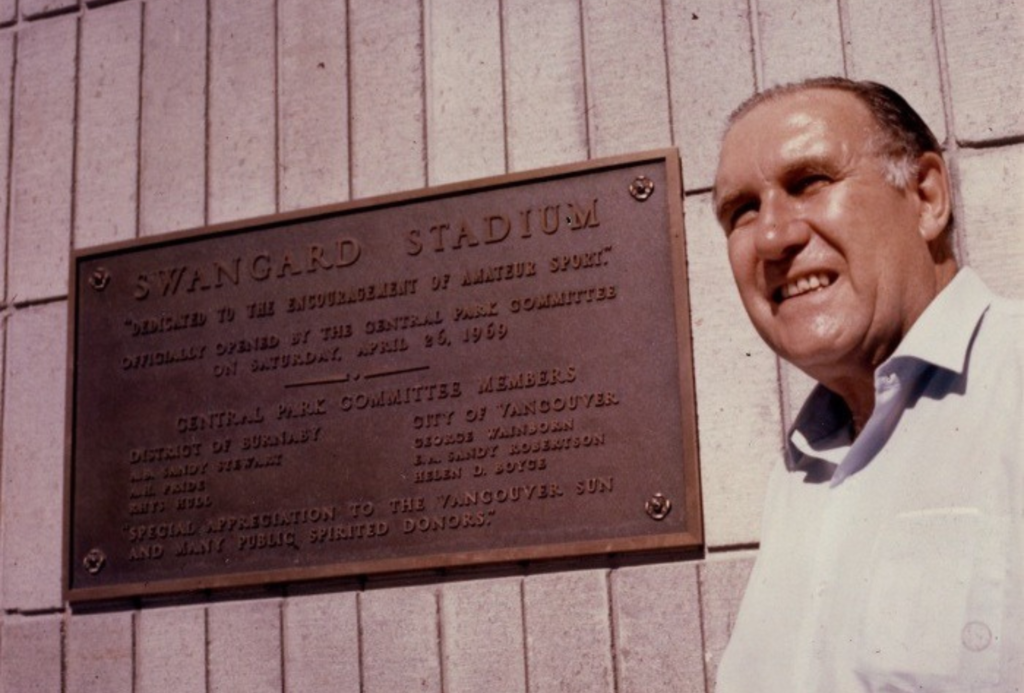
Born in Munich, Germany in 1908, Swangard came to Canada in 1930, looking to escape the Nazi party’s tightening, frightening grip. The far-flung flatlands of Saskatoon provided such refuge, and allowed for the possibility of a sporting life. Swangard became a freelance sports writer for the paper there, soon rising up the ranks. Eventually, earning a new opportunity at the Province in 1944, Swangard went westward and found his forever home. He moved over to the Sun after five years and would spend the next few decades promoting local sport in and around Vancouver.
Not only did Swangard raise the one million dollars needed to build what is now Rovers’ home, he also spearheaded the birth of Empire Stadium and the Pacific Coliseum, AND brought the British Empire and Commonwealth Games, the Grey Cup, the BC Lions, and the Vancouver Mounties to the area. Impressive stuff. Before Swangard, BC was not a given to host events. He fought for that right, beating out favoured, familiar spots in Eastern Canada. No longer was the choice merely between Ontario and Quebec – Canada’s temperate coast had entered the mix, flexing its many qualities. The Lower Mainland would not be the world-class sporting destination it is today if not for the diligent work of Erwin Swangard.
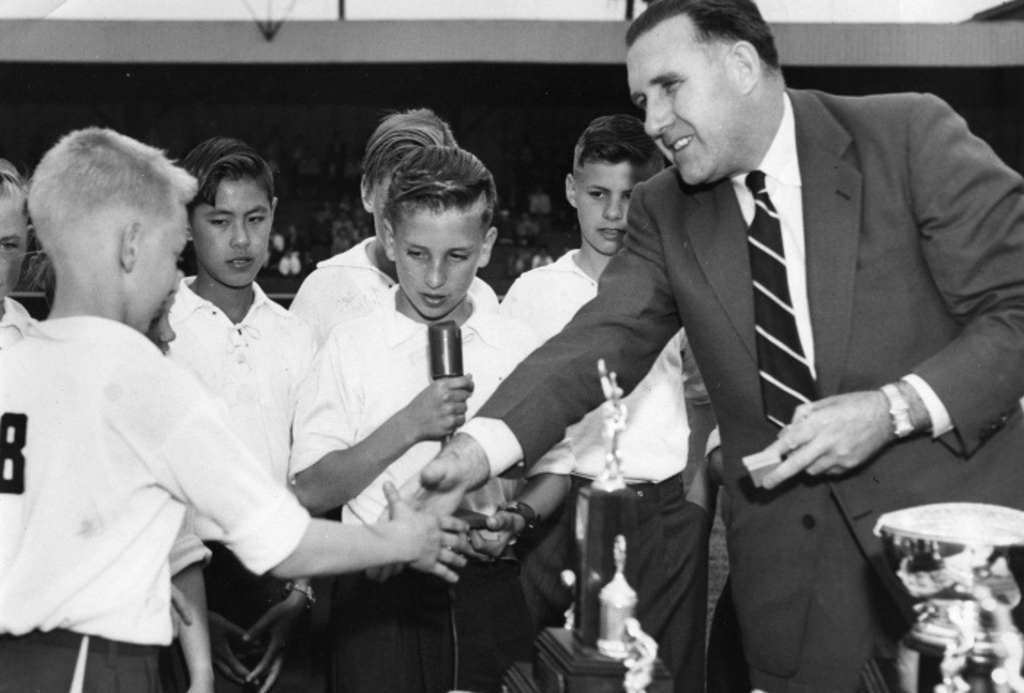
Mr. Swangard also fought for the growth of youth sport, founding the Sun Tournament of Champions in 1952, an annual youth soccer tournament. TSS Rovers, first as a school and then a club, was developed around the belief in creating opportunities for new Canadian talent, something Swangard would certainly approve of. Rovers and their supporters also share his swashbuckling DIY nature, boldly creating the kind of sporting culture they wanted to see in the Vancouver area. Before Rovers, there were no fan-owned teams here or in Canada as a whole. Before Rovers, talented local footballers were left to accumulate dust in a faulty system tied to the big business of Major League Soccer. Erwin Swangard dared to dream, but also had the conviction to turn those dreams into reality, setting an example for brave, sport-loving souls of the future. Swangard passed the torch and Rovers carry it proudly.
Every gameday at Swangard is special, but April’s Canadian Championship match between Rovers and the CPL’s Valour FC was on another level. The ground was buzzing. There hadn’t been this many passionate football fans here since the Whitecaps were tenants pre MLS. Food trucks lined the concourse, as did the home support. The floodlights were on and the TV cameras were out. The main stand filled up nicely come first kick, and when Rovers scored the game’s first two goals in quick succession, the place absolutely erupted – a joyful release loud enough to reach old Erwin up in the clouds. Rovers’ incredible 3-1 upset win against the fully-professional Valour was historic, a result that will live on forever in the collective memory of Canadian football fans, as will the already history-rich Swangard Stadium.
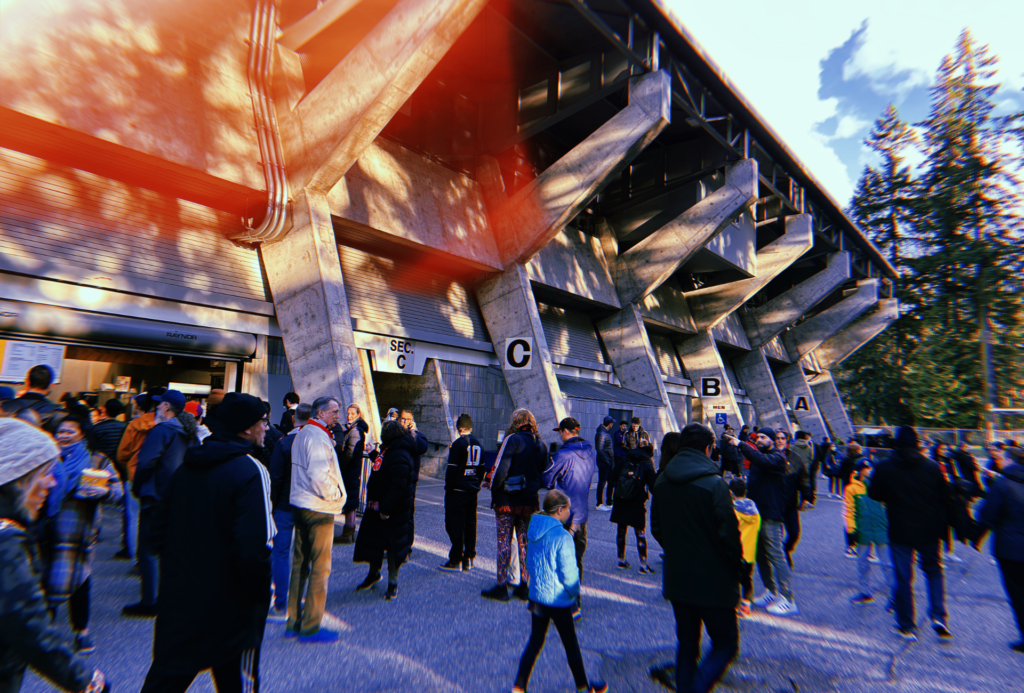
In 2023, Swangard remains largely unchanged from when it first opened 54 years ago. The sturdy concrete main stand, always more brutalist than classically beautiful, still stands strong while providing its two original, most-important purposes: seating and shade. The bathrooms are retro, including the tall porcelain urinals in the men’s, which are almost handsome. The field itself – one of the few natural grass surfaces used for high-level football in the Vancouver area – and the view of the Northshore mountains from it are the real gems. Whether you’re watching from the main stand or down at pitch level with the Swanguardians, the scenic panorama is always stunning. The tree-lined edge of Central Park is to the east, the unique L-shaped Telus building known as the “Boot” is on the west side, and those gorgeous mountains loom behind it all, filling the gaps beautifully.

There is risk of losing this cherished mountain view, which has remained unaltered since 1976, when the Boot was built. A local developer is looking to add five more, even bigger structures around it. They will range in height, but the tallest are set to be 53, 58, and 64 stories – true skyscrapers. There are two relatively new residential towers on the Vancouver side of Boundary Road, but what’s proposed will be double in height. The need for more housing is hard to argue with, but it will be a sad day when we lose sight of the greatest natural gift this area has on offer: the mighty, majestic mountains.
While we hope this last goodbye never comes, one “see you later” was always in the cards. Our time at Swangard Stadium in 2023 had to end, just a bit sooner than desired. There’s always next year, though; a new season will come around again, and more great memories will be made here at home. As the clever addition of the “u” in our name implies, the Swanguardians are the proud caretakers of this wonderful little ground, but also of the legacy and mission of the man behind it. Swangard is home, and home is where the heart is.


